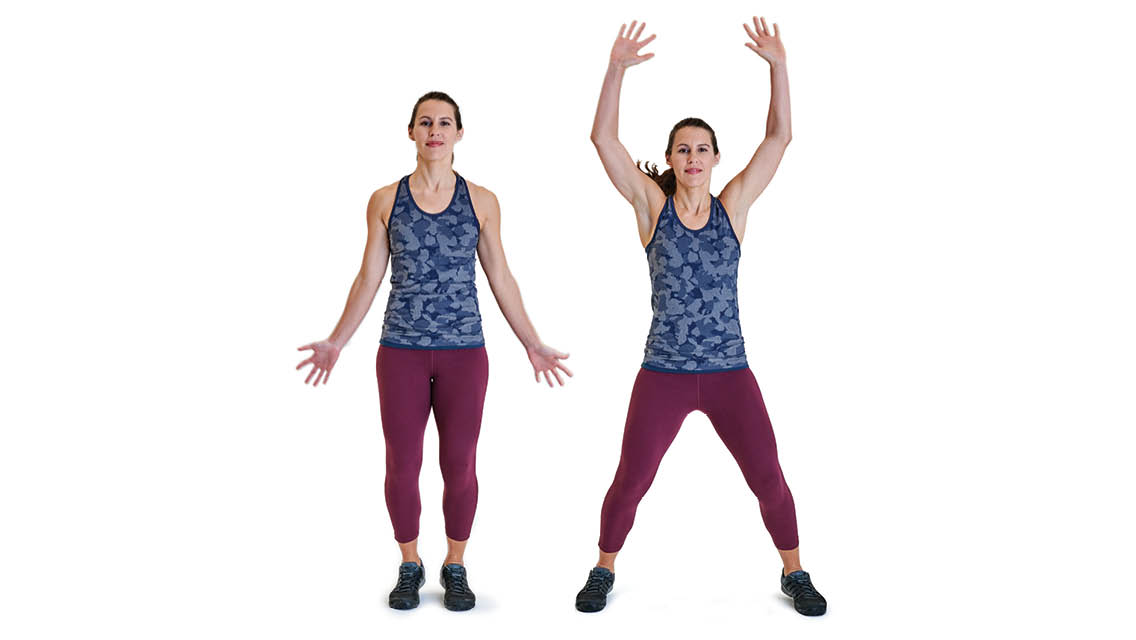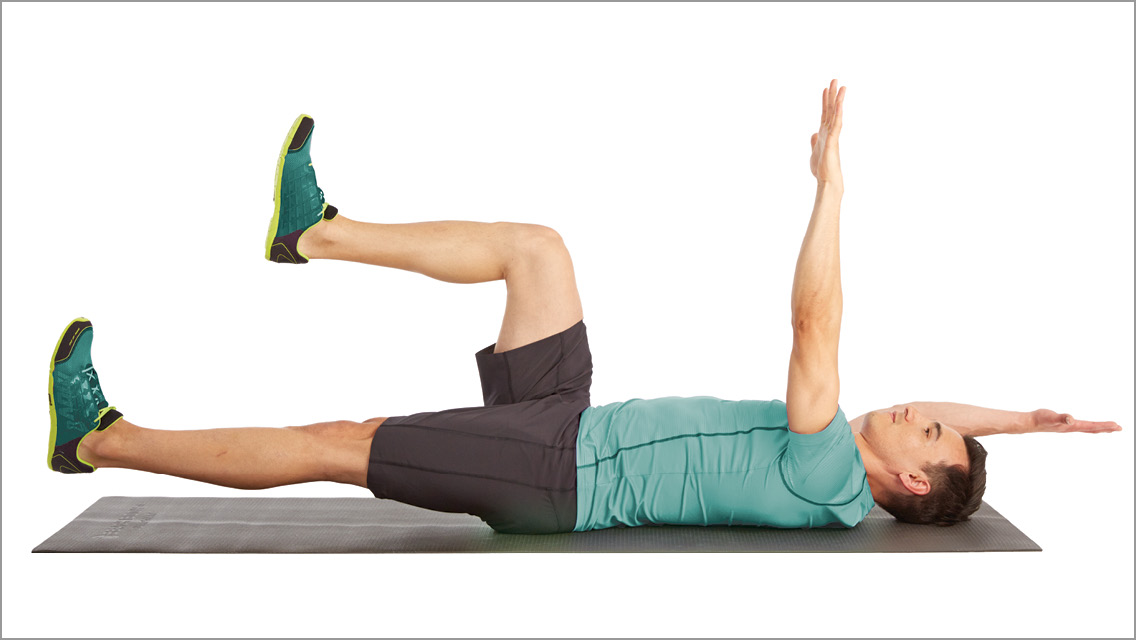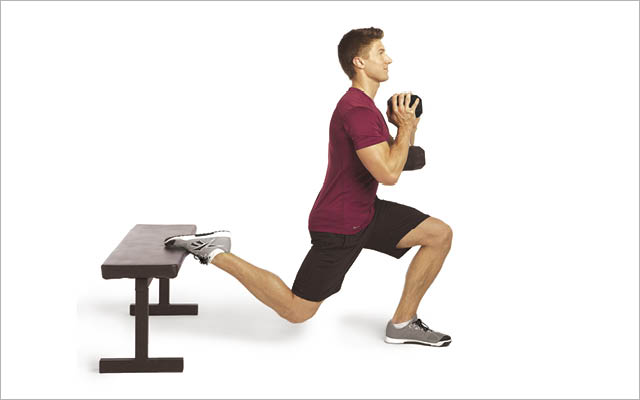Do jumping jacks make you jump for joy? If you’re someone who didn’t leave this classic move behind in grade school, you know it’s still a great way for adults to strengthen their muscles, heart, and lungs. Best of all, it is highly scalable, with variations that range widely in impact and intensity.
Jumping jacks engage nearly every muscle group, including the glutes, quads, hip flexors, abs, and shoulders. As a weight-bearing exercise, they can help strengthen bones in the feet, legs, hips, and spine. A do-anywhere cardio move, they also challenge coordination.
Jumping jacks are fairly simple to perform — but don’t use that as an excuse to ignore good form. To get the most out of the movement and avoid injury, maintain a strong, athletic posture and move with control.
Increase the difficulty by jumping higher or faster, by incorporating resistance bands, or by combining the move with squats, squat thrusts, and planks. Or pull back as needed by taking out the arm swing or replacing the jump with a side-to-side step.
For all their benefits and variations, jumping jacks are not for everyone. If you are pregnant, have a lower-body injury, or suffer from a chronic condition that affects the musculoskeletal system, steer clear of this move and consult with your healthcare provider.
Instructions
- Stand with your feet together and your arms by your sides.
- Jump both of your feet out a little wider than shoulder width apart while simultaneously bringing your arms over your head.
- Bring your arms back down and jump your feet back together to return to your starting position. Repeat.
Tips
- Keep your arms actively engaged, and work toward completing a full range of motion.
- Keep a slight bend in your knees and avoid locking them out.
- Maintain an upright posture, your shoulders stacked over your hips, throughout the move.
- Jump your feet to shoulder width or slightly wider apart and land softly with each jump.
9 Jumping-Jack Variations
Legs-Only Jacks
- Stand with your feet together and place your hands on your hips.
- Jump your feet out to shoulder width or slightly wider apart.
- Brace your abs for balance and jump your feet back together.
Low-Arm Jacks
- Stand with your feet together and hold your arms out in front of your chest, elbows slightly bent and palms facing each other.
- Jump your feet out to shoulder width or slightly wider apart. Simultaneously spread your arms to your sides, keeping them at shoulder level.
- Jump your feet back and bring your hands together to return to the start position.
Step Jacks
- Stand with your feet together and your arms by your sides.
- Step your right foot out to the side as you raise your arms up and overhead. Return to the starting position. Next, step your left foot out to the side as you bring your arms up and overhead. That’s one rep.
Floating-Arm Jacks
- Stand with your feet together and your arms by your sides.
- Begin with Legs-Only Jacks: Jump your feet out to shoulder width or slightly wider apart.
- Once you find a rhythm with your feet, incorporate the arms: Swing them out in front of you until your arms are overhead, then swing them forward and down until they are back at your sides.
- Repeat, jumping your feet in and out to the sides while floating your arms up and down in front of you.
- Note: This move is a bit of a brain-teaser for some people, as the arms and legs are moving in different directions (jumping side-to-side versus floating the arms forward). An additional challenge arises because the arms and feet aren’t necessarily moving to the same count. You’ll likely do four jumps with your lower body for every up-and-down with your arms. Don’t overthink it: Keep the arms loose, floating up and down, while maintaining a steady in-and-out rhythm with your feet.
Squat Jacks
- Start in a half-squat position, with feet hip width apart and arms by your sides.
- Jump your feet out wider, to shoulder width or slightly more; holding the squat, raise your arms overhead.
- Jump to bring your feet back to hip width, still holding the squat, and lower your arms to return to the start position.
Arm-Banded Jacks
- Stand with your feet together and hold your arms out in front of your chest, grasping a long resistance band in both hands at shoulder height.
- Jump your feet out to shoulder width or slightly wider apart. Simultaneously spread your arms to your sides, drawing the resistance band taut across your chest.
- Jump your feet back and bring your hands together to return to the start position.
Leg-Banded Jacks
- Stand with your feet together, with a small resistance band looped around your thighs, and your arms at your sides.
- Jump both of your feet out a little wider than shoulder width apart while simultaneously bringing your arms over your head.
- Bring your arms back down and jump your feet back together to return to your starting position. Repeat.
Plank Jacks
- Start at the top of a pushup, in a high-plank position. Place your hands under your shoulders and engage your core.
- Without moving your hands or compromising your core engagement, jump your feet out to the side and land softly on the balls of your feet, just wider than shoulder width. Don’t let your hips hike up or dip down as you jump.
- Jump your feet back in with control.
Extreme Jumping Jacks
- Perform a standard jumping jack, but after returning to your starting position, squat down low to the ground.
- Plant your hands in front of you and jump your feet back into a plank position.
- Next, jump your hands and feet both out wide from your body. Your body position should resemble a horizontal jumping jack.
- Then, jump your hands and feet back to a shoulder-width position again, bring your feet back toward your hands, and stand back up into your starting position.
- Repeat this series of movements for the duration of the exercise.
This article originally appeared as “The Jumping Jack” in the October 2021 issue of Experience Life.





This Post Has 0 Comments